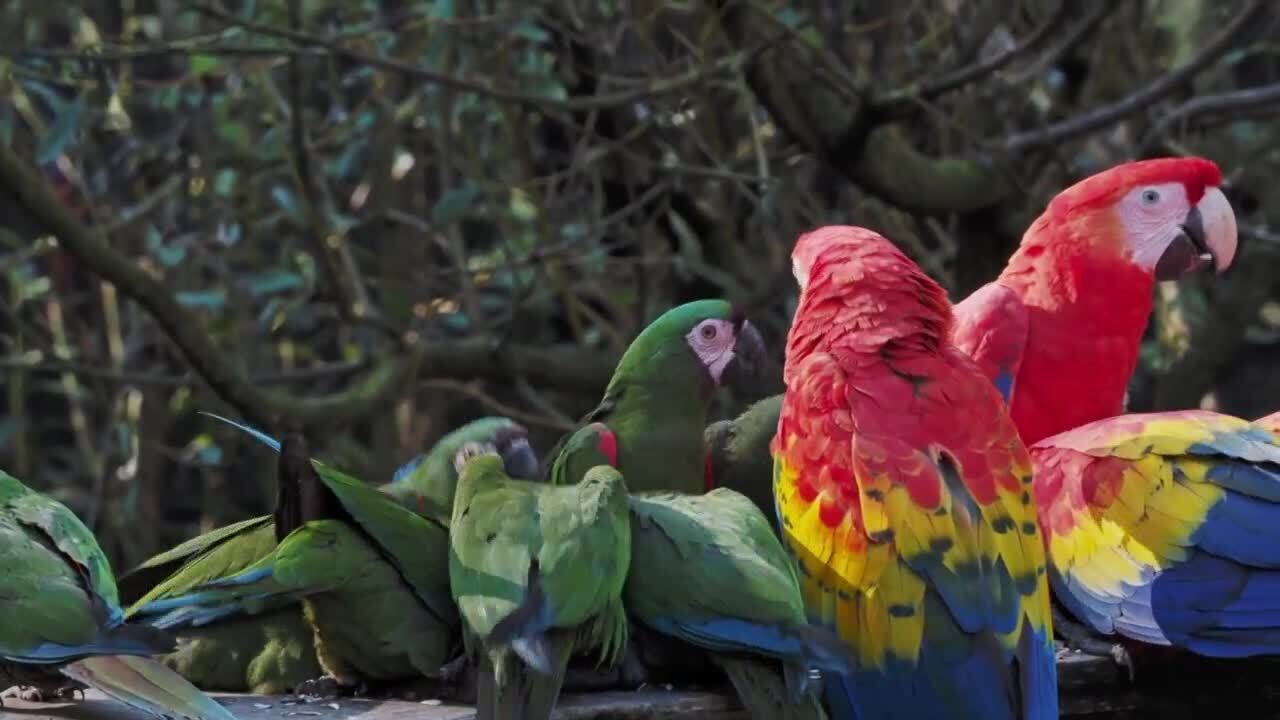MISSOULA - It usually seems most wildlife doesn't want to be seen, and displaying detailed camouflage can keep them out of our sight. So why do some animals have striking colors for anyone to see?
Many animals are vibrantly colored. Some like the scarlet macaw use their colors to attract mates while others — like the eastern coral snake — use their shiny scales and alternating rings of red, yellow and black to warn predators of their neurotoxic venom.
But why would these species evolve similar colors to send completely different messages?
Researchers at the University of Arizona set out to figure out just that and they found that bright colors in wildlife were associated with the behavior of their ancestors.

It was found that the ancestors of wildlife like parrots that use their vibrant colors to attract mates were primarily active during the day. While the ancestors of those that use their colors to warn predators were mostly active at night.
Many amphibians and snakes that we see that are brightly colored today are diurnal, which means they are active during the day, yet their ancestors were nocturnal, or active during the night.
The ancestors of animals with bright colors used for mating were not colorful at all.
In their early stages of evolution, they were, well, quite dull. But as their evolution progressed vibrant colors were selected because for these species it allowed them to reproduce and survive.

But this wasn’t the same scenario for amphibians and snakes with these flashy colors whose ancestors were mating at night. According to this latest research vibrant colors would provide no advantage in the attraction game because it would be too dark to see them.
Although amphibians have great color vision at night today, this was not the case for their ancient cousins. The lack of exquisite colors helping the mating game this opened the door for them to evolve colors to warn off predators.
Another likely explanation for snakes and frogs evolving to have warning colors is since their ancestors were nocturnal if a predator found them sleeping in the daytime while vulnerable, these bright colors can be an indicator not to be messed with.

Researchers give a specific example of the red-eyed tree frog. While sleeping all you would see is its basic green body but upon awakening, its bright red eyes become exposed as well as its vibrant orange feet. These unexpected colors would likely startle a predator to pause if anything just long enough for the frog to escape.
Whether it’s bright eyes or a full body of startling colors, predators seem to know to stay away.
But how do they know this? The answer may be in a simple video game. This strategy, where wildlife tells predators that it is not worth attacking or eating, is known as aposematism.
Research suggests that for a predator to learn quickly that something tastes bad or has more severe toxic side effects, it depends on the number of animals in their environment that have color patterns with toxic capabilities.

Trying to figure this out in the natural world is incredibly complex so researchers turned to humans. And they created a game based on real aposematic butterflies where you try and eat only the ones that don’t taste bad.
From this game, researchers found that predators (or humans in this case) can quickly learn if only four color patterns are shown. They also found predators learned faster when vibrant colors were much different from non-toxic displays.
So, whether they’re a friend or foe, the dash of color in nature can protect predators and prey.








